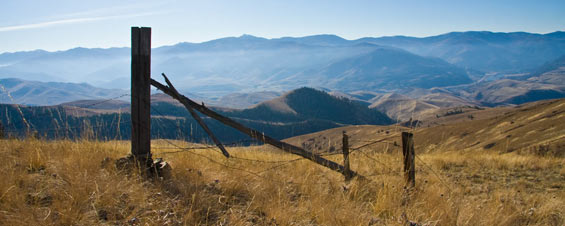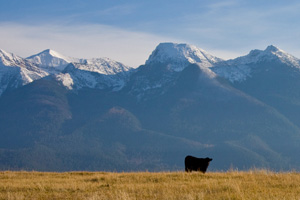
The quality of a steak depends on a variety of factors including the breed, genetics, and how the cattle were raised.

How Grass Fed Beef is Raised (including New Zealand Black Angus Beef):
Grass fed beef has been fed grass for most of its life (if not all, as in the case of New Zealand Black Angus beef). Grass fed beef tends to have a lower fat content (and lower saturated fat content) than conventional beef, which also makes it cook faster.
Grass fed beef is generally not graded by the USDA (Select, Choice, Prime) because its natural levels of marbling are usually lower than those found in conventional beef.
In order to increase the marbling, tenderness, and quantity of the finished grass fed beef, grass fed cows are often “grain finished.” This means that they are switched to a grain diet towards the end of their lives to fatten them up. Our New Zealand Angus Beef is not grain finished; the cows eat a diet of grass for their entire life.
It is important to note that grass fed beef is not automatically free range beef. “Grass fed” cattle can be raised on crowded feed lots just like conventional cattle and fed cut grasses.
How Kobe Beef is Raised:
A lot of legends surround the secretive ways Kobe beef cattle are raised. You may have heard that they drink beer and are regularly massaged (sometimes with beer or sake). While some Kobe producers do have secret husbandry methods that may include these, in actuality a lot of what makes Kobe beef (aka wagyu beef) special is the breed. Wagyu cattle, whether they’re raised in Japan, Australia, or the US, are genetically predisposed to an extremely high level of marbling. This marbling gives their meat a buttery rich flavor and makes it incredibly moist and tender. It almost melts in your mouth. In addition to great steaks, these attributes make Kobe beef burgers among the most moist and delicious available.
Their marbling is far above the highest grade on the USDA scale, so a special scale created by the Japanese is used (Kobe beef grading information).
Though they can be raised in many different ways, Kobe beef cattle are generally grain-fed. All solid muscle cut Kobe beef offered by Marx Foods (steaks, tenderloins, etc) has not been fed growth hormones or sub-therapeutic antibiotics.
How Conventional Beef is Raised:
Conventional cattle, where most beef comes from, are raised with one goal in mind: quantity. Because of this they are packed into massive feed lots, where it is easy to feed, medicate, and keep track of them. Here the cattle are fed lots and lots of grain (often corn), which fattens them up quickly. Producing that grain requires a lot of fuel, fertilizers and pesticides, which account for significant greenhouse gas emissions. This is one reason why grass fed beef is more environmentally friendly.
Conventional cattle are also often treated with growth stimulants like hormones or antibiotics during their lifetimes to get them to grow bigger faster. It seems that antibiotics, when administered outside of the normal levels needed to treat animal sickness as it occurs, can actually act as a growth stimulant.
For this reason (according to the League of Concerned Scientists) 70% of all the antibiotics used in the United States go to conventional livestock and poultry…often to promote greater “feed efficiency” (ratio of pounds of meat produced per pound of feed fed to the animal).
Read More About Beef:
Why “Black Angus” Beef is Special



Comments 2
Pingback: MarxFoods.com Blog » Blog Archive » Why Angus Beef is So Well Regarded
Pingback: MarxFoods.com Blog » Blog Archive » Why “Free Range” Doesn’t Do Montana Black Angus Beef Justice